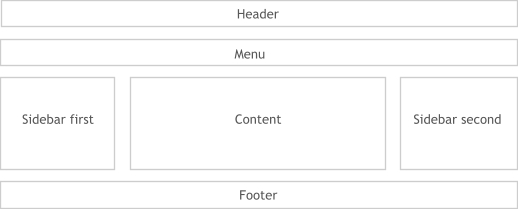If you have a layout that contains sidebars, headers, or footers, you will most likely have content that is repeated between pages. If you edit this content in one place, you would expect it to be updated on every page.
This is where blocks come in.
In Drupal 8, there is another entity type called a block.
A block is a piece of content that can be placed in a specific region of a page, and you can set rules that determine when (on which actual pages) the block appears, depending on various conditions such as the page URL or the currently logged in user's role(s).
An example of a block is the Main menu.
A typical simple website page template will often have a header, footer, and perhaps, left and right sidebar regions as shown in the following diagram:

Within these page template regions, you can add repeating content such as the site logo, a menu, shopping cart, terms and conditions, or other items of content.
Because Drupal is a modular framework, modules can define a block that you can...



